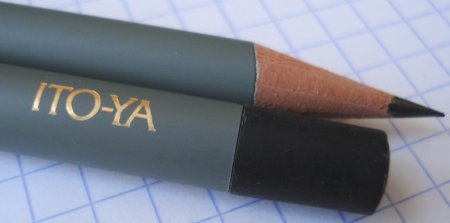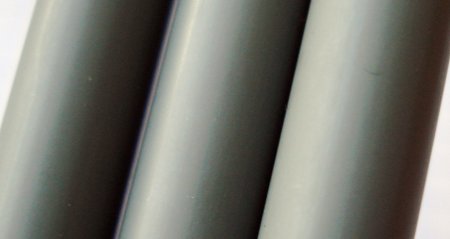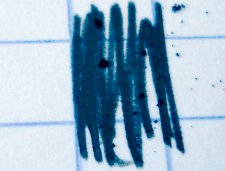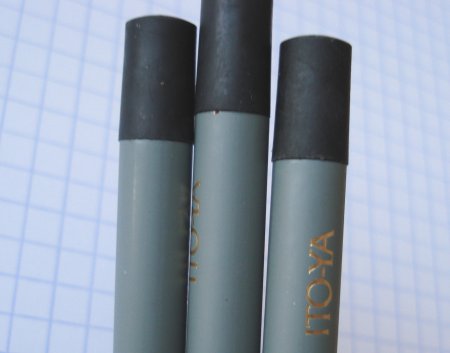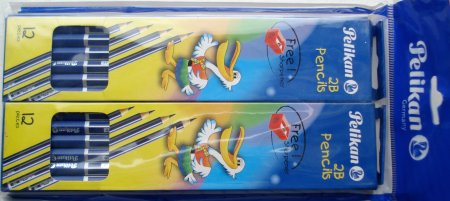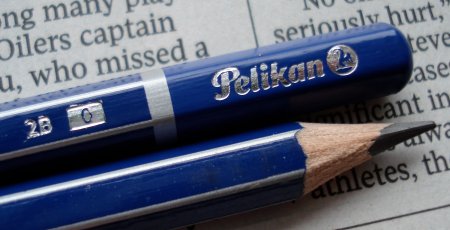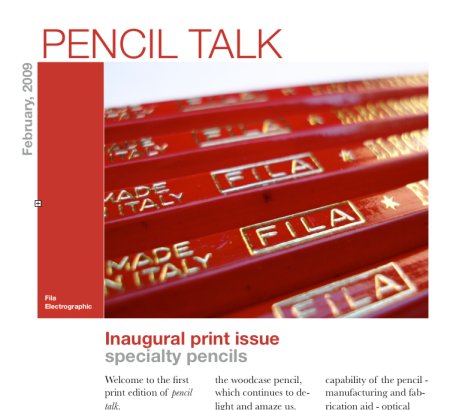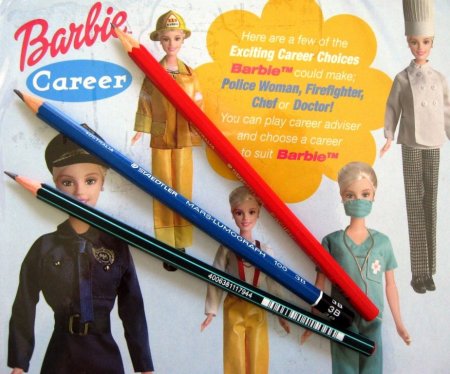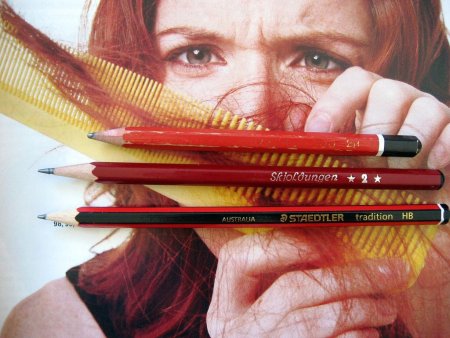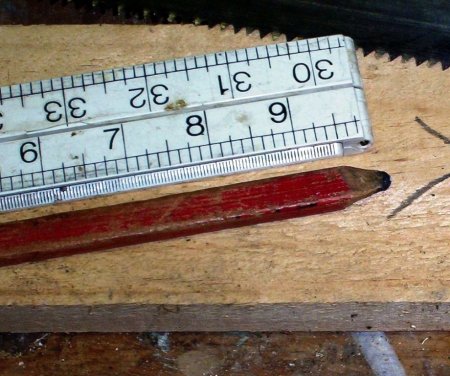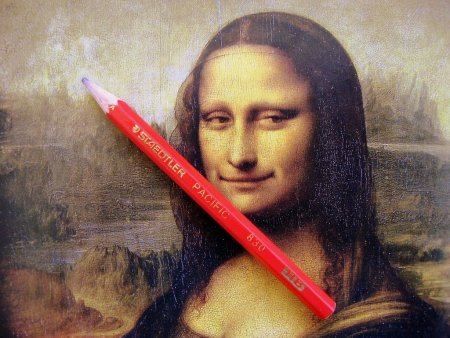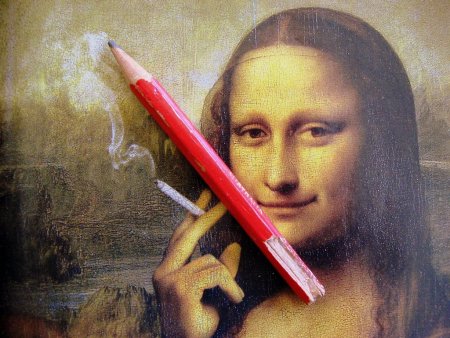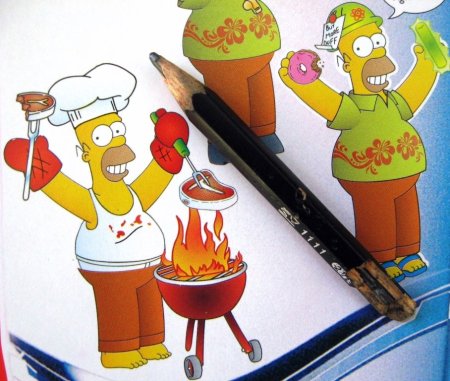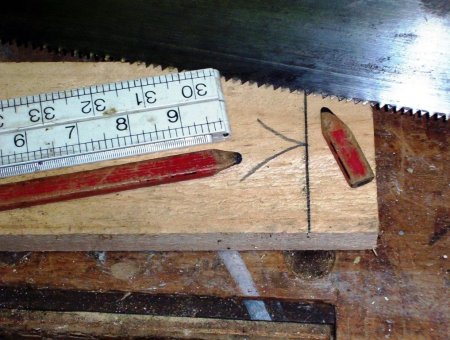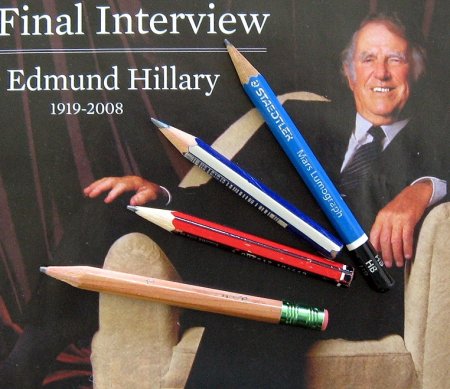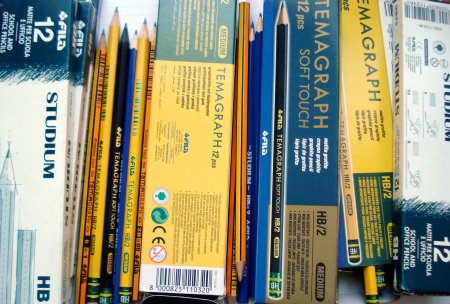
Fabbrica Italiana Lapis ed Affini S.p.A. (FILA) is a famous and longstanding pencil manufacturer, dating from 1920. Their name is synonymous with Italian pencil making.

Pencils, the book (a museum catalogue), features many fine examples of their productions.
The last few years for FILA have been highlighted by two major international acquisitions – the 2005 purchase of American manufacturer Dixon (who originated in 1795) and 2008 purchase of German manufacturer Lyra (who date back to 1806).
Think about this for a moment. The roots of this industry are quite incredible – a company in their eightieth (nearing ninetieth) year, buying two competitors, each over two centuries old. A New World company dating to the 18th century is especially noteworthy.
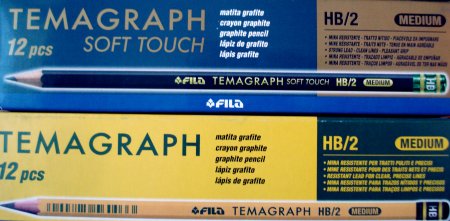
So what’s in store? Dixon’s US pencil production has ceased, having moved to Mexico and China. FILA’s modern pencil production appears to be Chinese based. And we’ve heard that Lyra will be moving production to China. (Most of it was already there, pre-acquisition.)
Yet the national brands continue – it appears that FILA/Lyra/Dixon intends on making their pencils in China, but continuing existing branding.
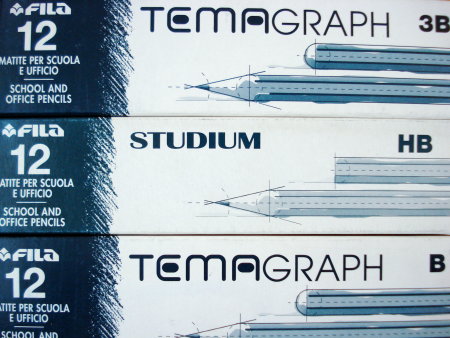
Some context set, let’s take a look at a few pencils from FILA. They are an “assortment” – essentially what a vendor had on hand and was willing to ship overseas. Probably not a complete line by any means – I was still happy to acquire them.
There seem to be two rough categories here – new (with colour and photo or CG images in the boxes) and old (with monochrome, line drawn images).
The new:
Temagraph
Two versions – with and without eraser. They are marked:
FILA Temagraph HB/2 Medium
Is that three degree indicators in total (HB,2,Medium)? And – are they exactly Dixon Tonderogas, or just similar? The unerasered pencil is certainly interesting – the metal cap seems to also be a uniquely styled degree indicator.
The box has a most intersting touch: a printed checkbox statement of origin:
Made by Fila-Dixon In:
Italy [] France [] China[x] Mexico []
I wonder what doesn’t get checked that way.
The box has markings in eight or more languages. I’m not sure if the pencil is sold in that many countries – they are very challenging to locate online.
Temagraph Soft Touch
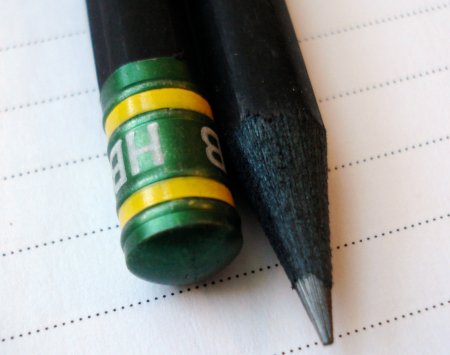
A black-dyed wood pencil, I think it has some of the same rubberized surface as the Tri-Conderoga, though it seems a bit more subtle and refined. (A second generation?)
The old:
Studium
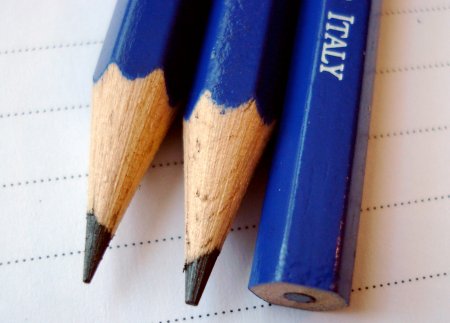
Marked “~Studium~ HB=2 FILA Florence Italy” in white on blue, they are a basic student pencil.
Temagraph
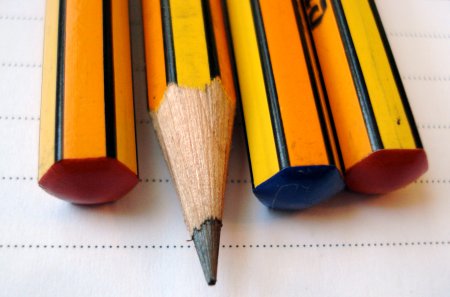
These appear to be an older version of the Temagraph. They have a distinctive look, with alternating sides painted yellow or orange and edges black. The cap indicates the pencil grade. And yes, we learn that 3B = 00!
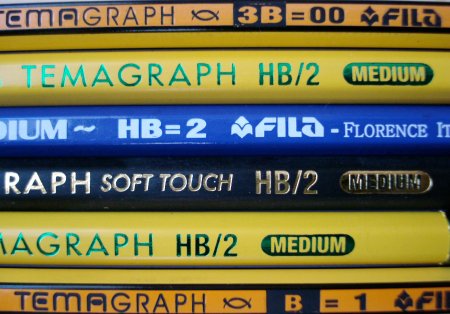
The older Temagraphs are definitely the most interesting, as well as being the best writers of the bunch.
Do you know FILA?









